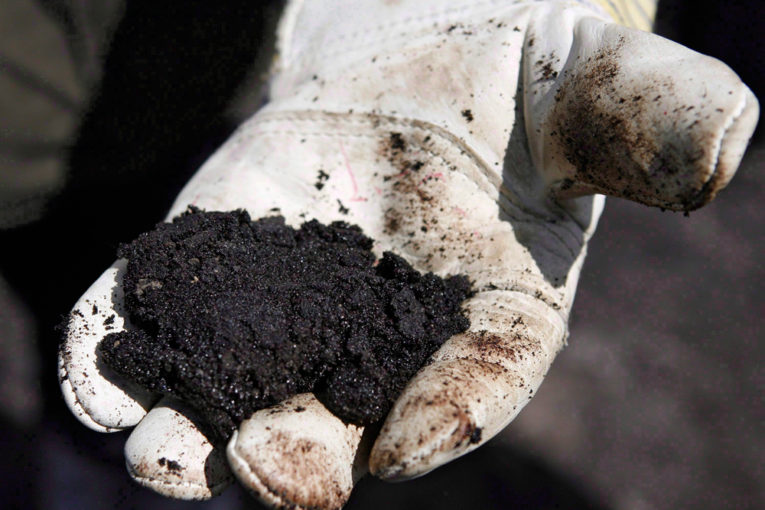
CALGARY — Canada’s oilsands industry, hard hit by a price storm this year, could be sailing straight into a pricing typhoon stirred up by new fuel standards for the international shipping industry.
The tighter pollution rules by the International Maritime Organization, dubbed IMO 2020, are set to take effect Jan. 1, 2020, resulting in the sulphur content limit of “bunker” fuel on ships dropping from 3.5 per cent to just 0.5 per cent.
The switch is expected to wallop prices for heavy oil containing high levels of sulphur — exactly the kind of the raw bitumen that makes up about half of Canada’s 4.4 million barrels per day of crude oil production.
“It’s bad news for any producers of heavy, sour crude oil,” said Martin Tallett, president of Massachusetts-based oil market research firm EnSys Energy.
“The shock is going to go through the system and affect all products, all regions.”
Canada’s energy industry faced a widening spread between Canadian heavy crude prices compared with New York-traded West Texas Intermediate earlier this year that many observers blamed on a shortage of capacity on export pipelines out of Canada.
The coming marine shipping rules could double or even triple the discount on Canadian heavy, pushing it potentially much wider than the US$30 a barrel discount producers encountered earlier this year, Tallett said.
The resulting decline in demand for bitumen compared with lighter crudes could result in higher discount prices that last until 2022, according to a report from RBC Dominion Securities researchers.
The looming deadline is a concern at Calgary-based Cenovus Energy Inc., where about 360,000 barrels per day or 91 per cent of its overall production is bitumen, produced from its steam-driven oilsands wells in northern Alberta.
The IMO 2020 rules, along with uncertainty about when pipeline bottlenecks will be cleared, and limits on the company’s ability to process its oil at the U.S. refineries it co-owns, are issues to consider before any moves are made to expand production, said downstream senior vice-president Keith Chiasson.
“We are obviously watching that space,” he said on a recent conference call, adding, “Do we want to bring new production growth into that market if we start seeing (new pipelines) deferred and delayed as well as the IMO impact coming?”
The US$30 discount paid for bitumen-blend Western Canadian Select versus WTI in the first quarter, up from its typical discount in the mid-teens, prompted Canadian Natural Resources Ltd. to rein in bitumen production and led Husky Energy Inc. to buy more oil from others because it was cheaper than producing its own.
Uncertainty continues to plague proposed new export pipelines including TransCanada’s Keystone XL project, the expansion of the Trans Mountain pipeline (despite it being sold to the federal government) and Enbridge’s Line 3 pipeline replacement as environmental opposition to the projects remains high.
Environmental concerns have also prompted action in the marine shipping industry, which is considered a highly energy efficient way to move goods over long distances but still harmful due to emissions.
Most bunker fuel burned on ships is derived from the “residue” that remains after all of the more valuable light fuels such as gasoline and diesel have been removed from crude oil in a refinery.
Following combustion in the engine, the sulphur in the fuel becomes sulphur oxide, a pollutant that causes respiratory symptoms and lung disease as well as acid rain, which can harm crops, forests and aquatic species, and contributes to the acidification of the oceans.
The IMO first began restricting emissions in 2005 and its limits on sulphur in bunker fuel have been progressively tightened. Four “emission control areas” in Europe and North America already have a 0.1 per cent limit.
Bunker fuel prices are expected to rise as the IMO 2020 standards lead to expensive upgrades at refineries around the world — by up to US$60 billion per year if there’s full compliance with the new rules, consultancy Wood Mackenzie said in an April study.
It estimates demand for bunker fuels will total about 5.3 million barrels per day in 2020, far exceeding the anticipated world supply of about 1.2 million bpd of ultra-low sulphur fuels from refineries.
That means ships will have to either switch to alternative fuels, which could include marine gas oil, liquefied natural gas or biofuels, or install scrubbers to remove sulphur from exhaust gas.
Tallett said not all oilsands output will suffer because of IMO 2020 — synthetic crude produced from upgraders at oilsands mining operations is considered a light oil and, as such, would still attract prices similar to WTI.
Suncor CEO Steve Williams said in a conference call last month that he thinks the company will come out ahead.
“We think net-net we will actually gain by the IMO 2020 and that’s to do with the diesel yields off of our average barrel across the company and the fact that we think demand and prices will be relatively strong,” he said.
“So, overall, the impact for Suncor is a positive one.”
Suncor produced 425,000 bpd of upgraded crude oil in the first quarter, representing about 77 per cent of its overall oilsands production. It also owns refineries that can buy and process its raw bitumen for further price protection.
While most observers agree that IMO 2020 negatively affects the price outlook for Canadian bitumen producers, there are differences in opinion about how much.
Researchers at Calgary-based GMP FirstEnergy Capital say the impact will be reduced by factors including new pipeline startups, increased U.S. demand for Canadian bitumen to replace declining imports of sour heavy oil from Mexico and Venezuela, and an erosion in the value of the Canadian dollar, which will improve the return for Canadian oil sold in American currency.
“For now, we are treating it as a small negative for prices leading into 2020.”
You can read more of the news on source
